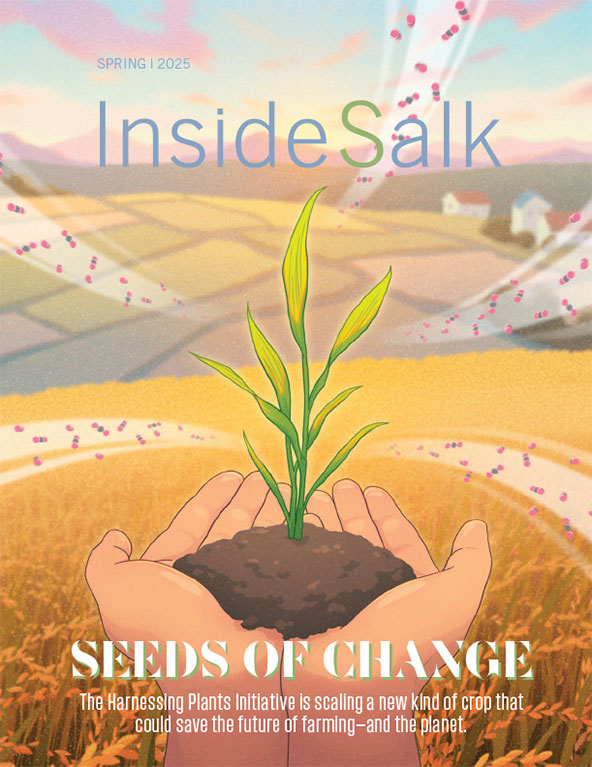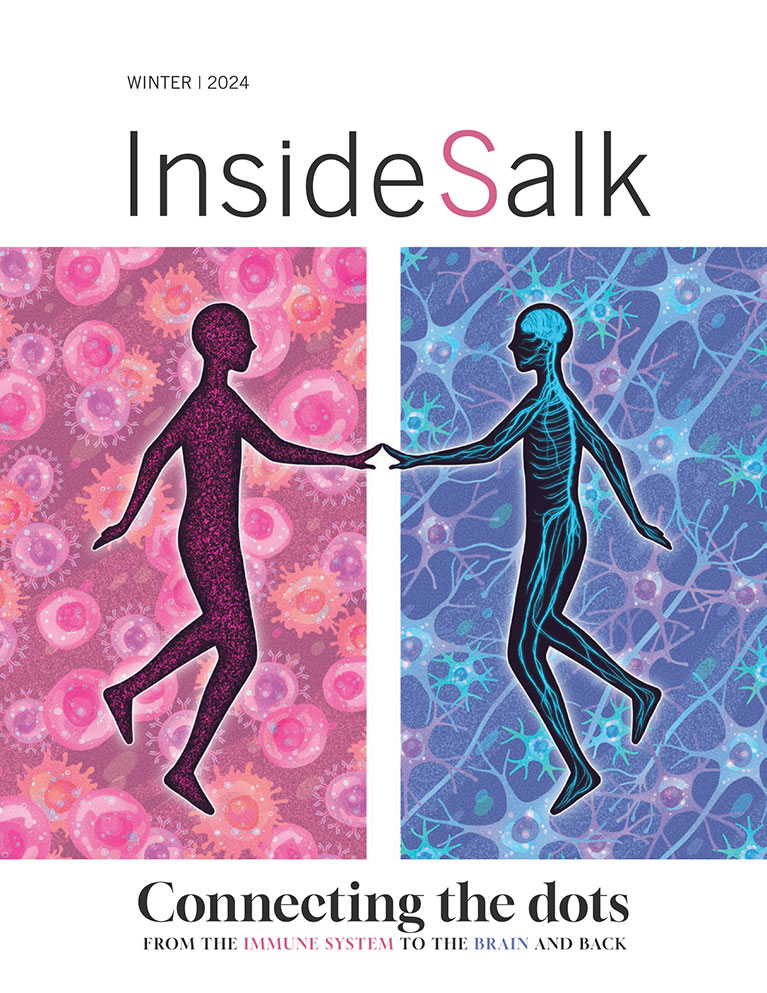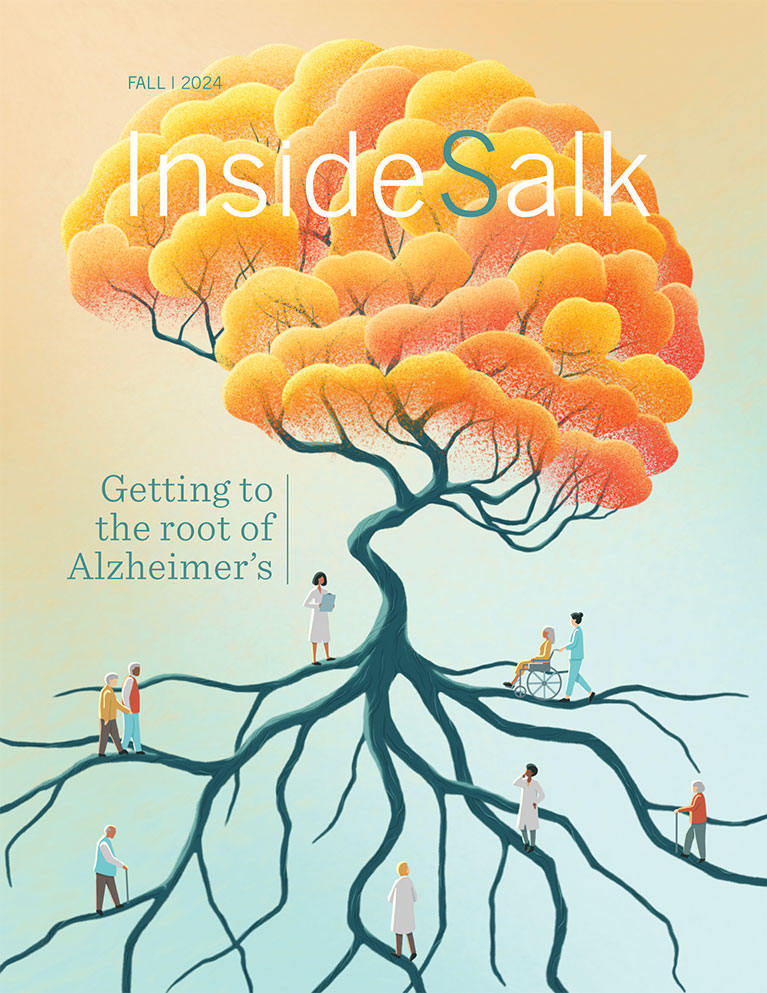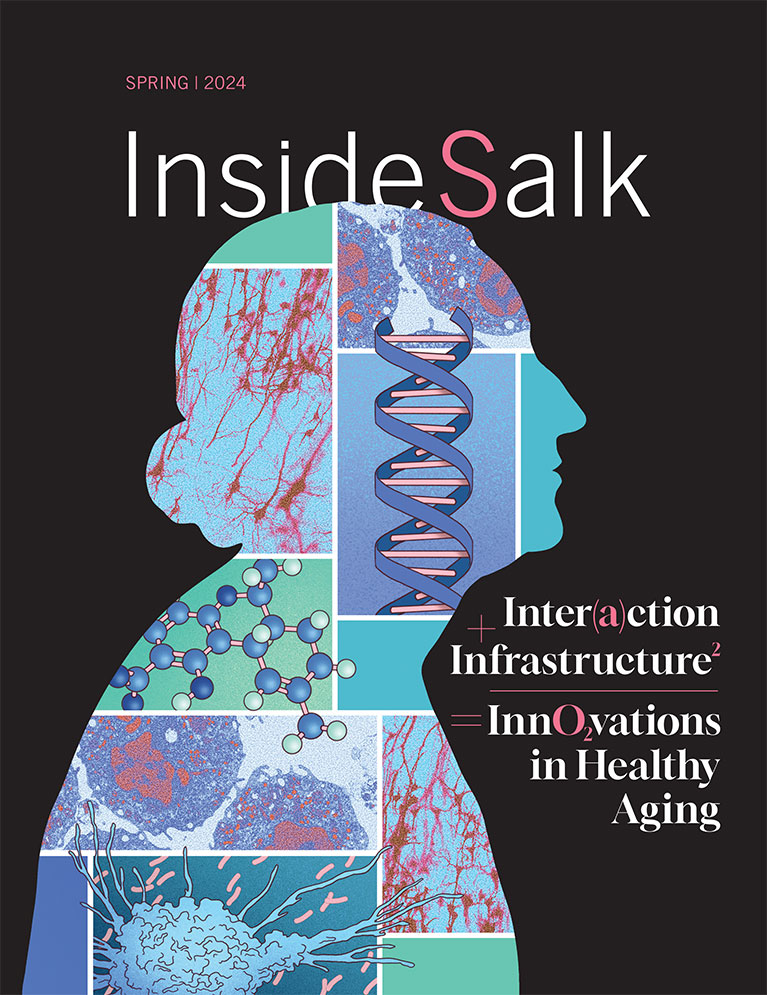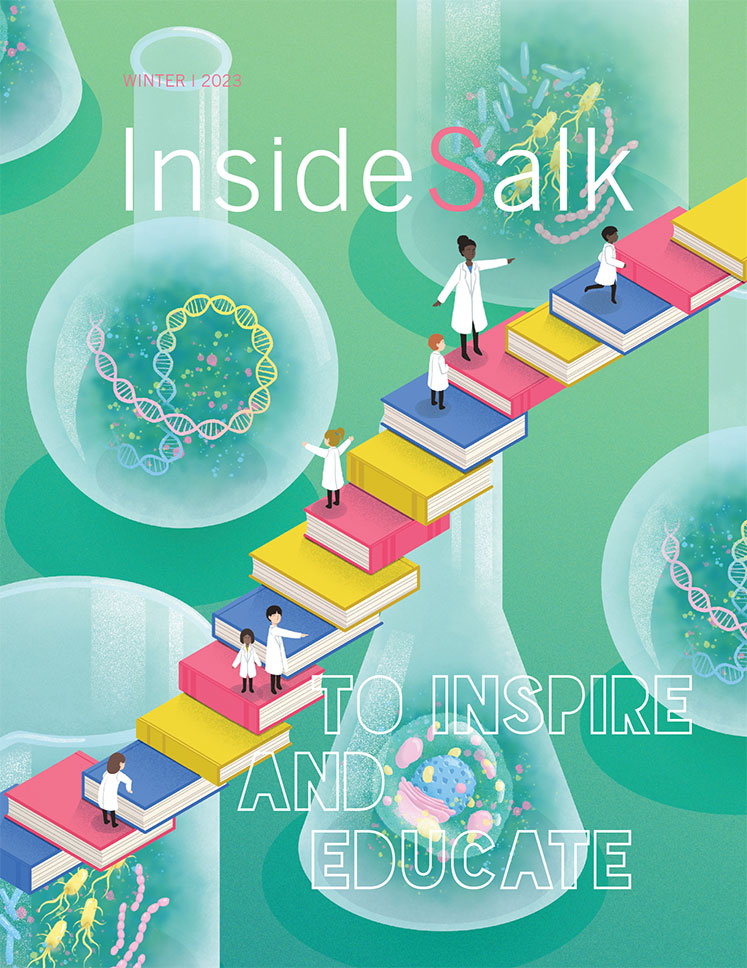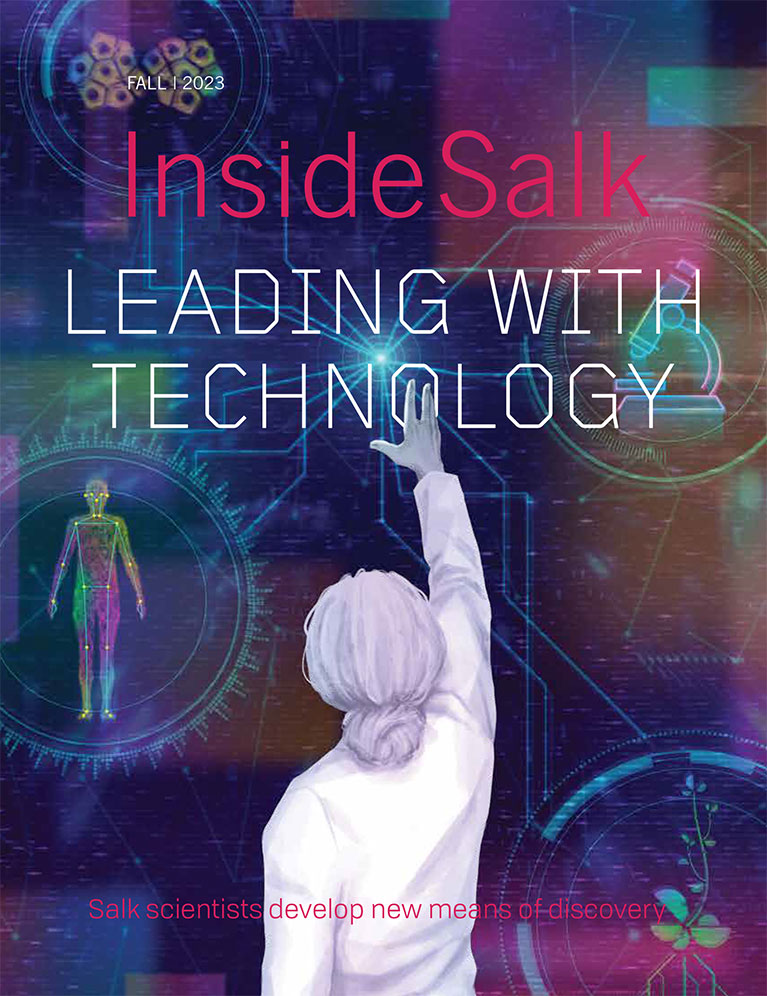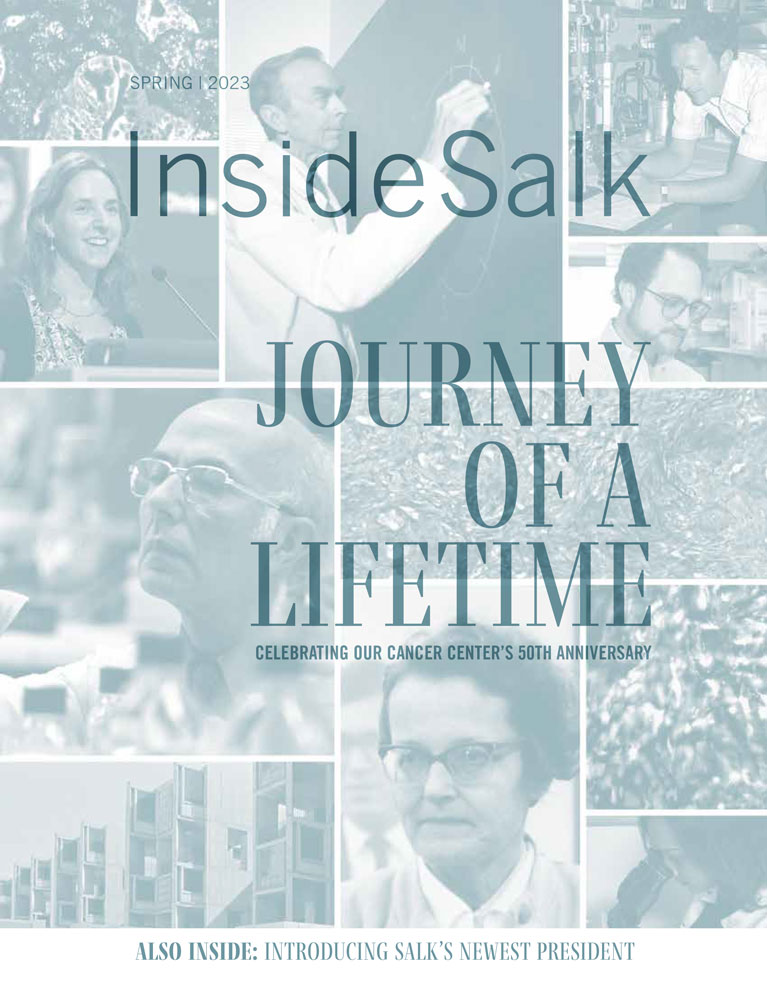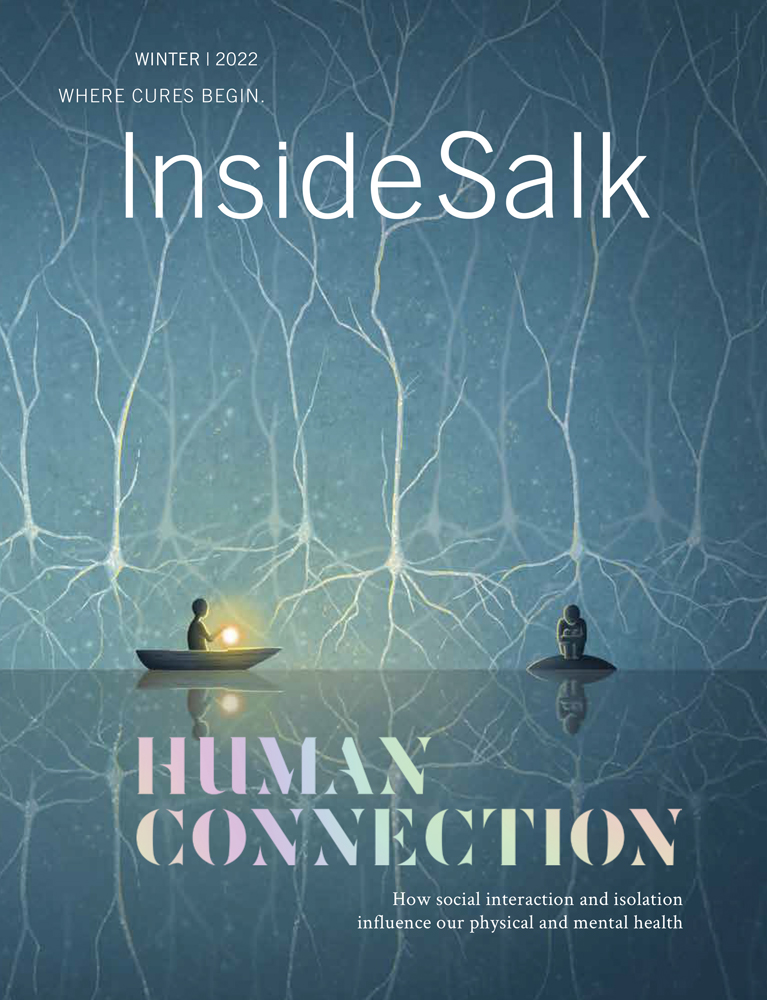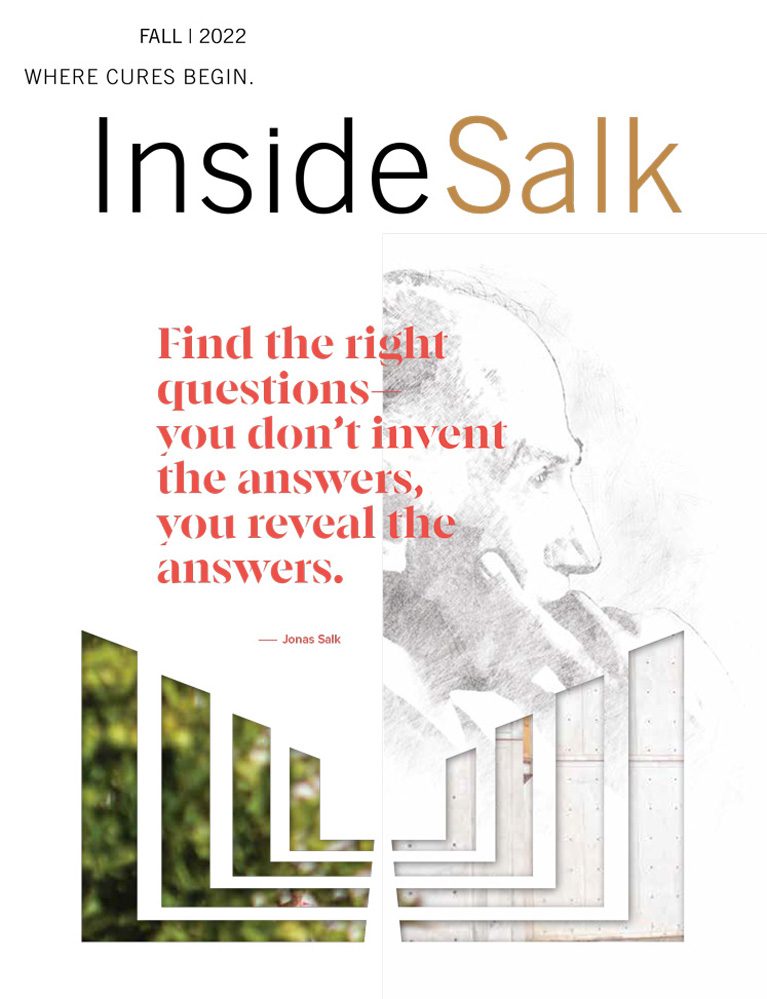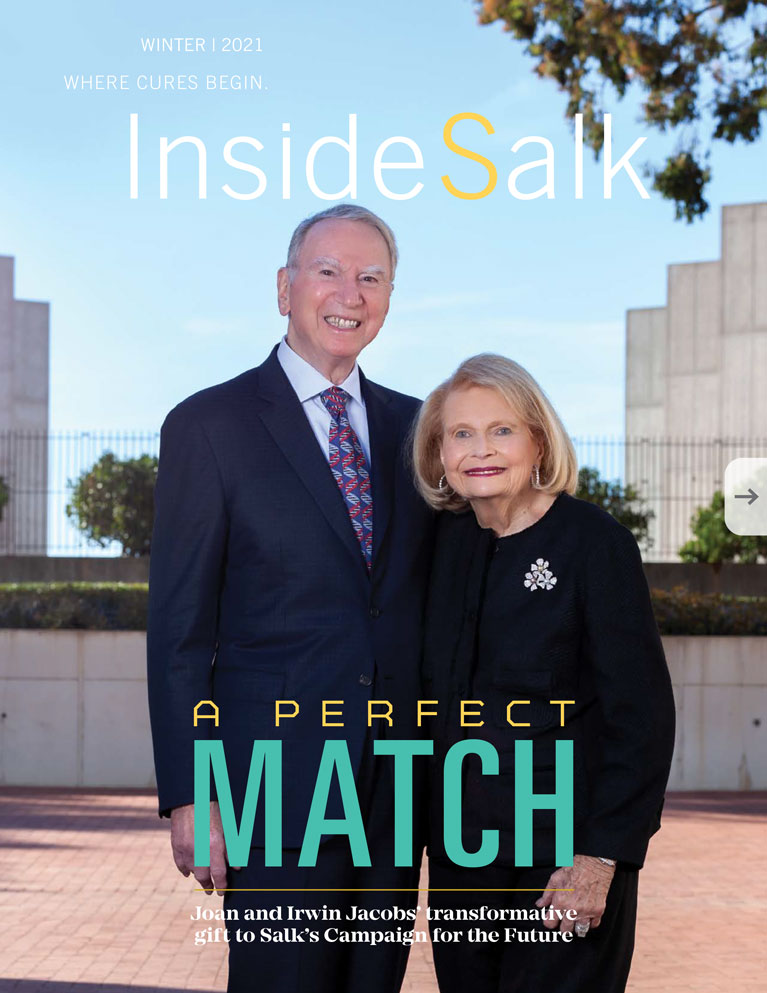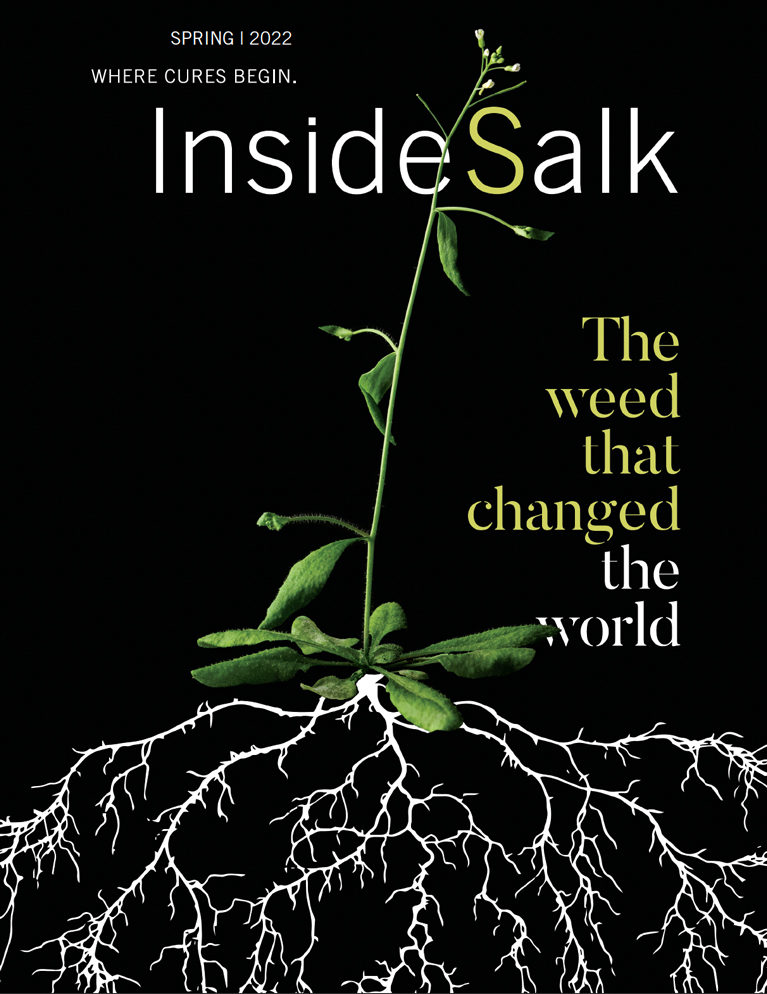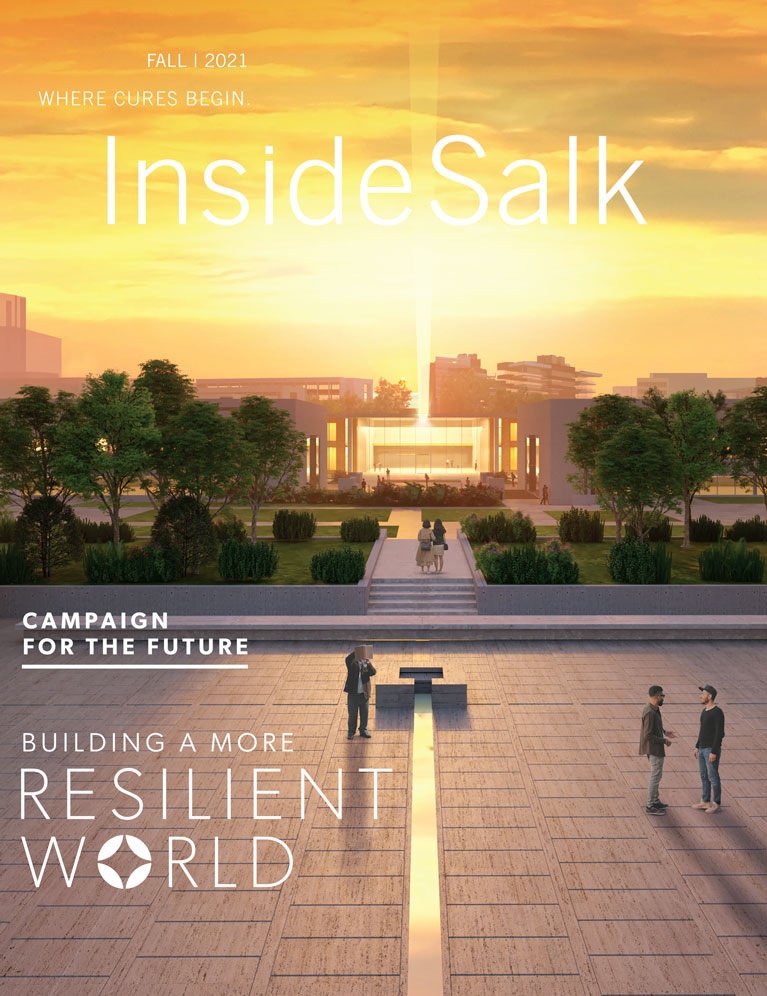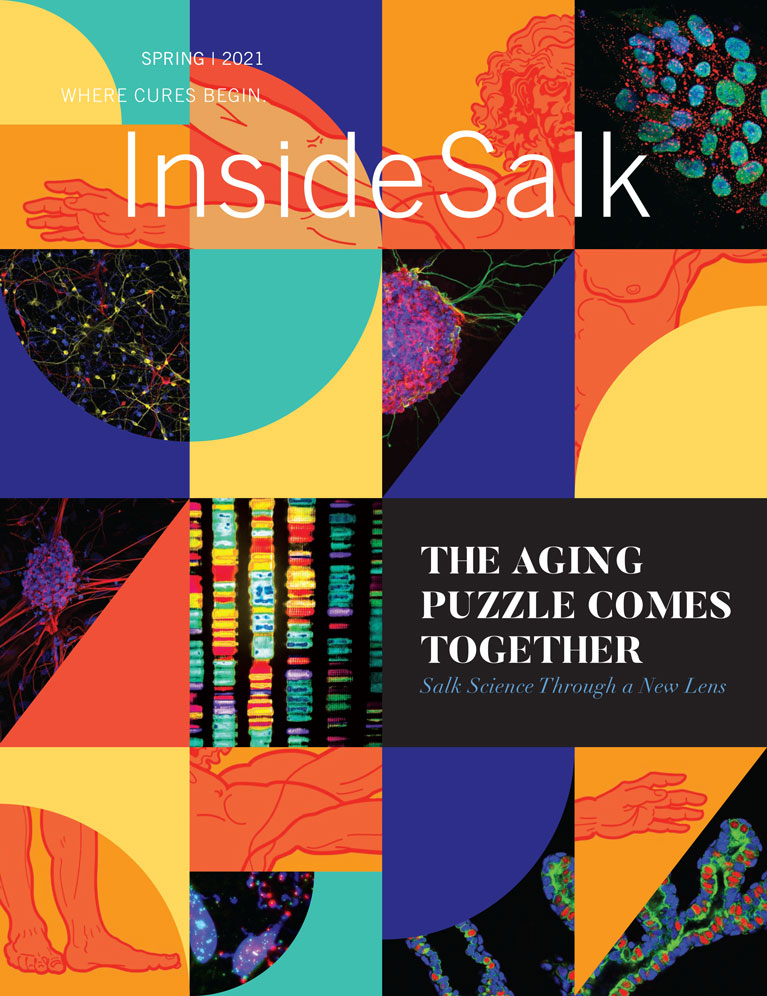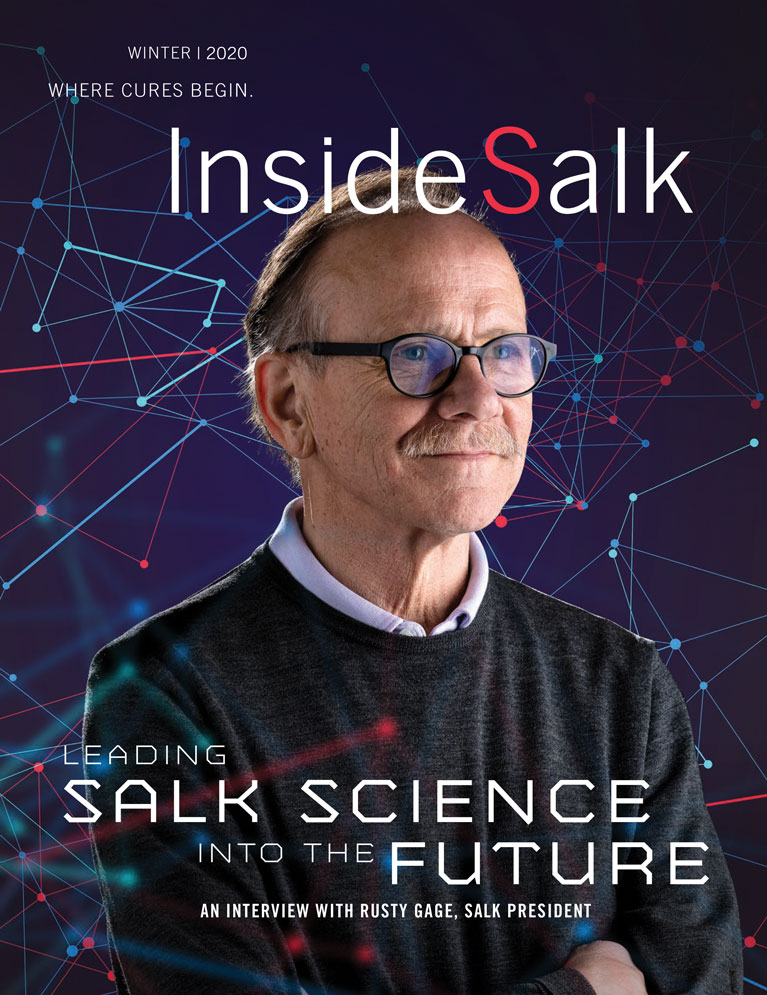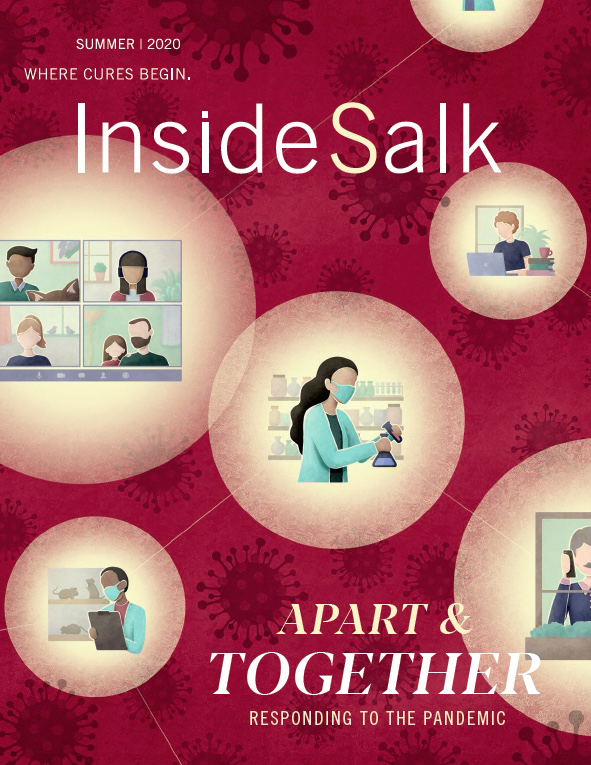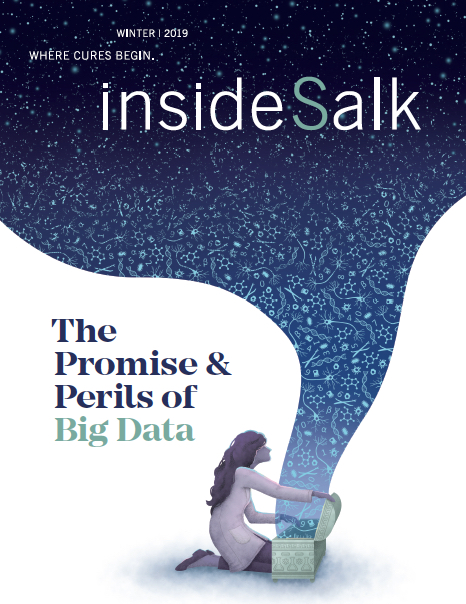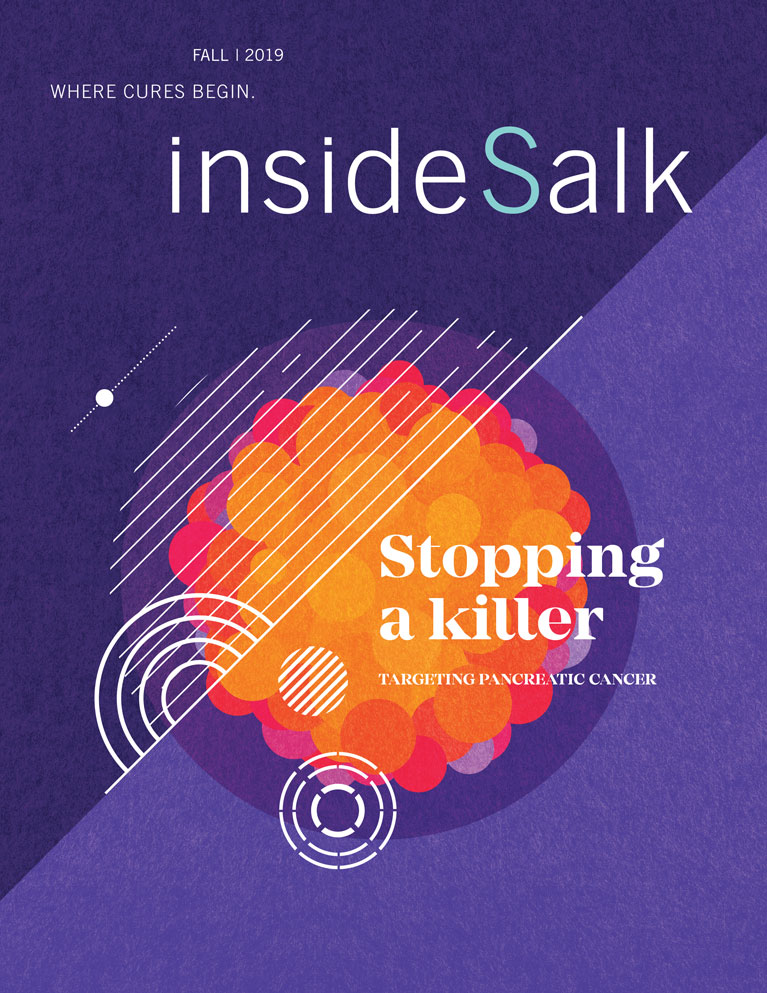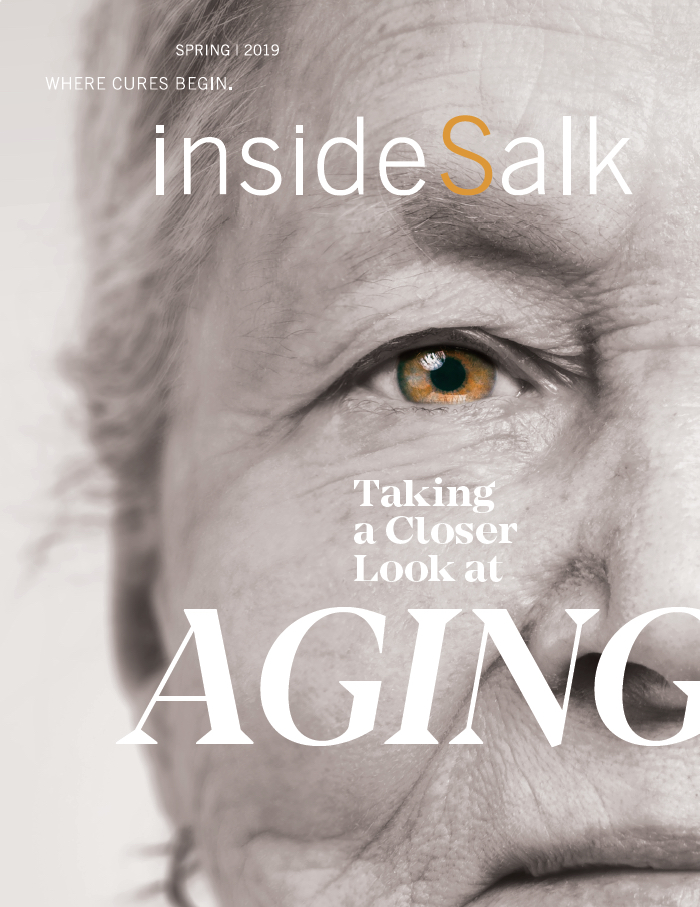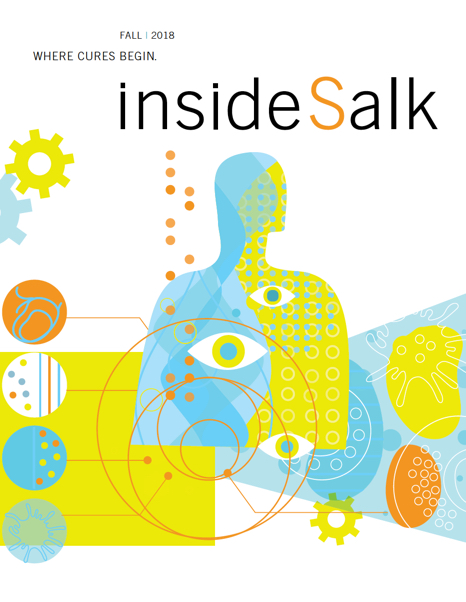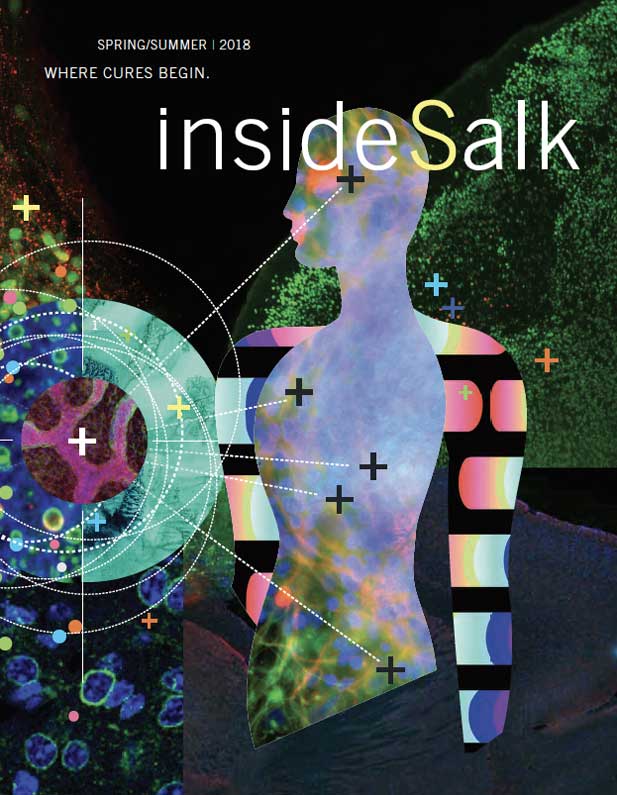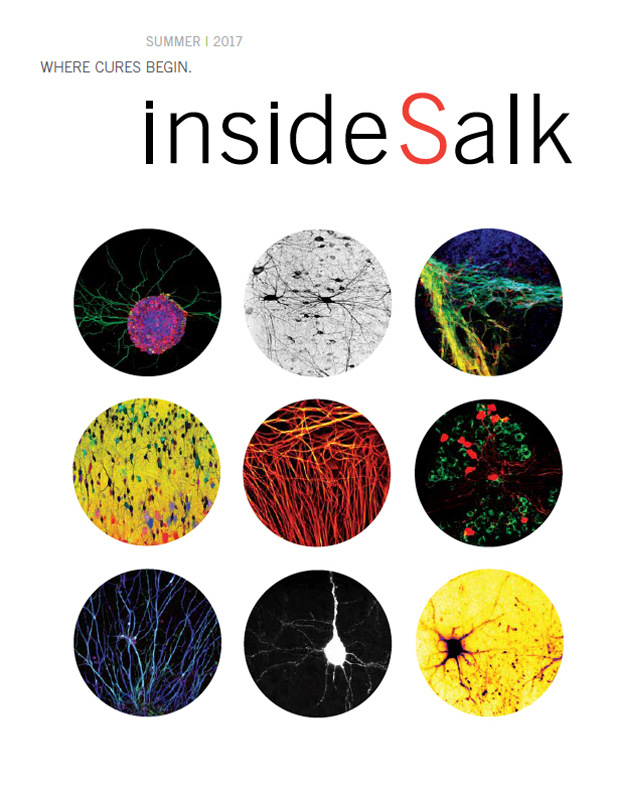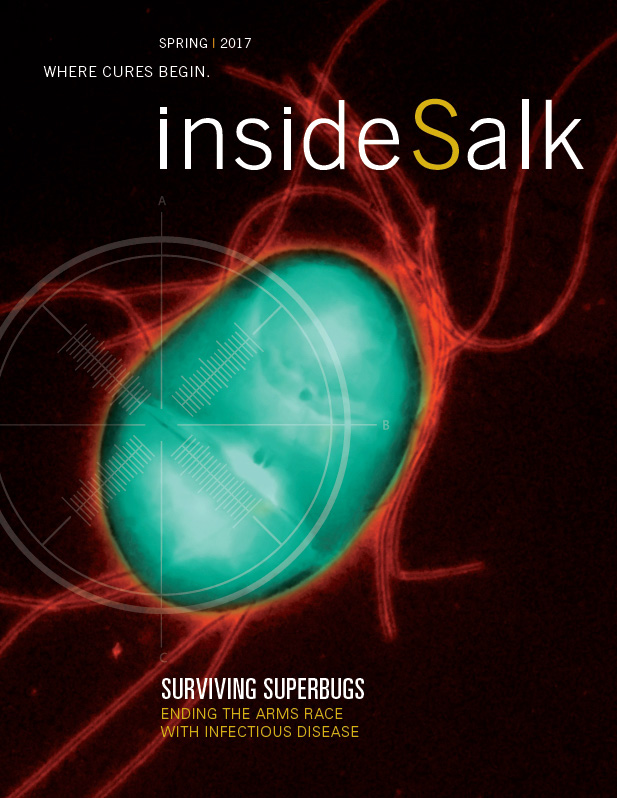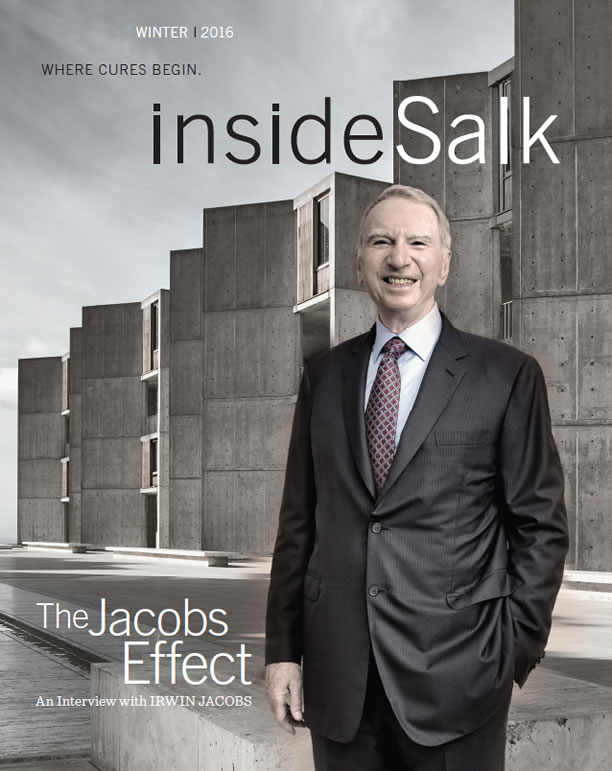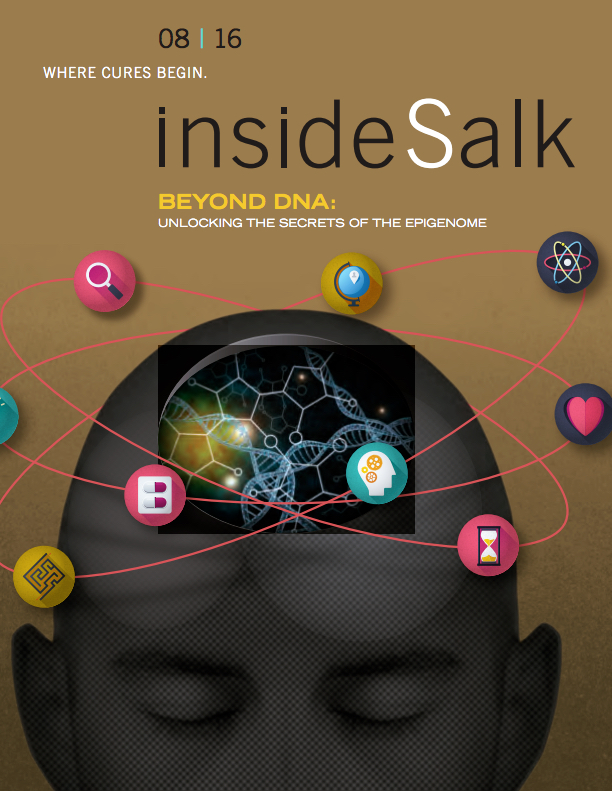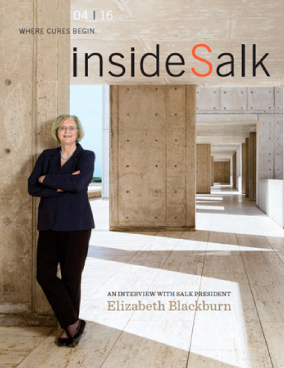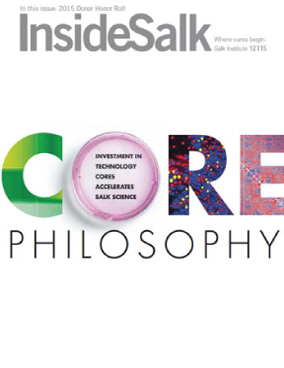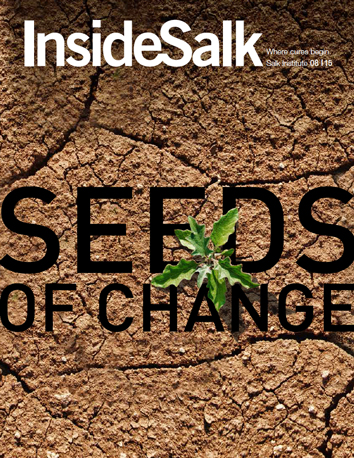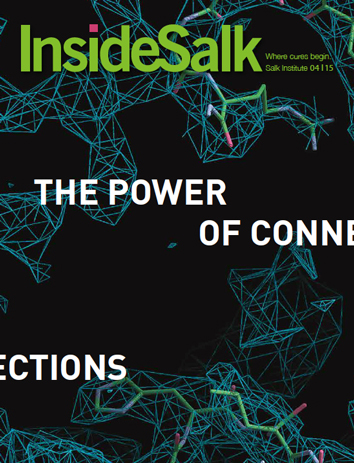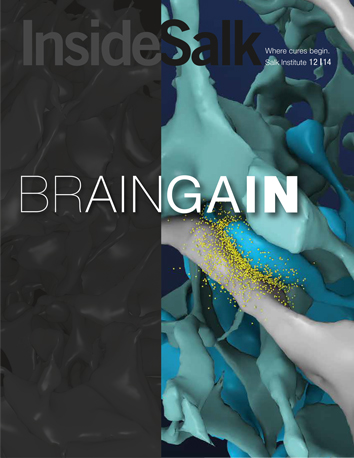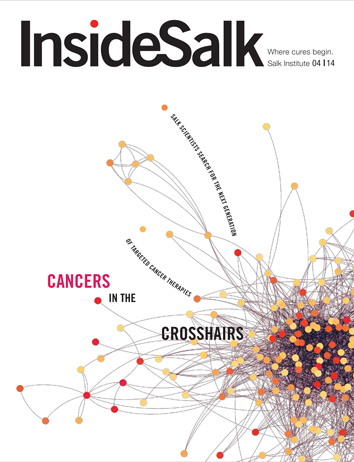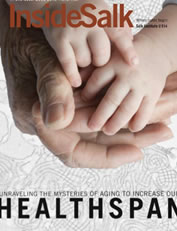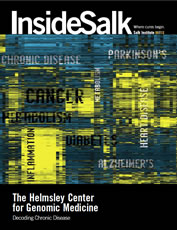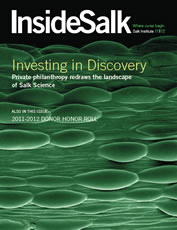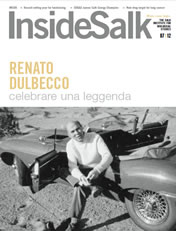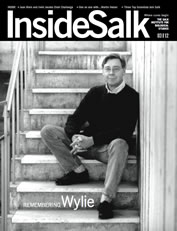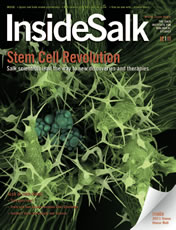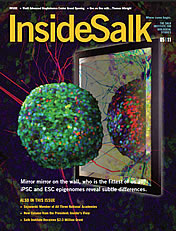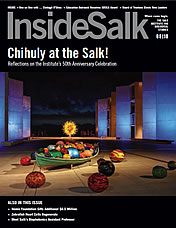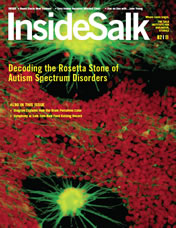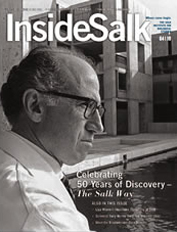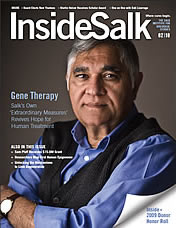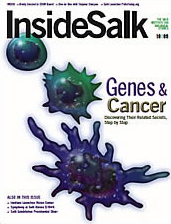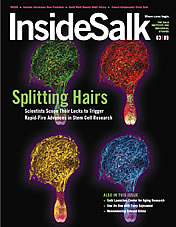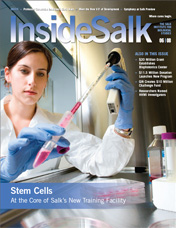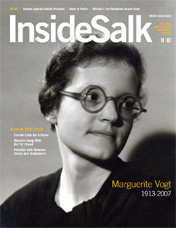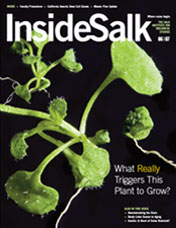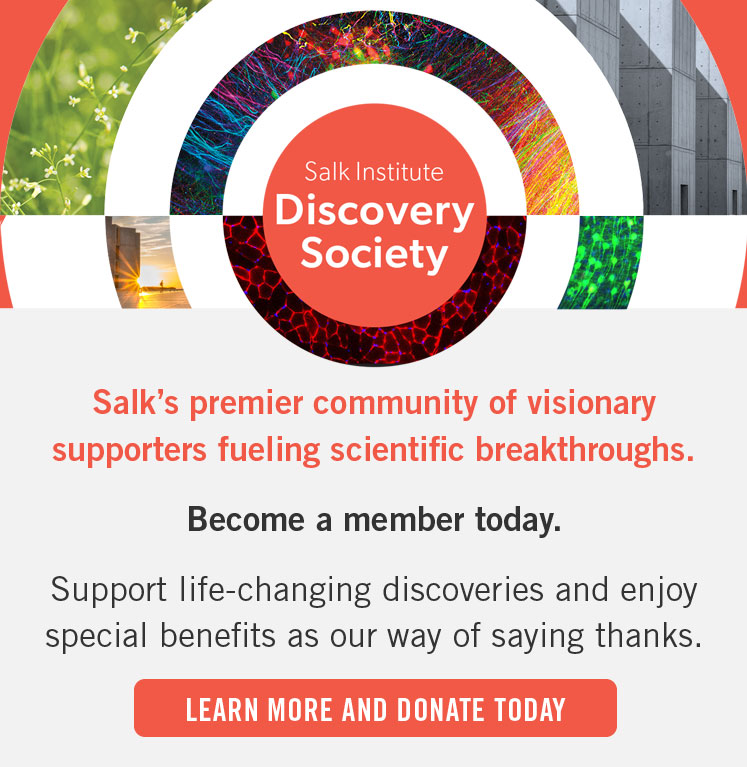Insights Michelle Chamberlain Bringing together communities old and new
Daughter, cousin, student, friend, scholar, teacher, attorney, board member, wife, fundraiser, leader—Michelle Chamberlain has grown in and out of these many roles throughout her lifetime. Whether it’s by blood or by coincidence, each part of her life can be traced to a relationship she’s made. A commitment to friends, family, colleagues, and newcomers alike sets her apart and has inspired her search for a career that’s both personally meaningful and globally impactful.
Today, Chamberlain serves as vice president of External Relations at Salk. Alongside other Institute leaders, she oversees all fundraising efforts, communications, community engagement, foundation relations, and stewardship activities.
Deep roots
“I grew up in a small community in Southern California,” says Chamberlain. “I have a very close-knit group of friends that I’ve maintained since elementary school. And as an only child, I was lucky enough to have six female cousins close to my age that helped me develop skills like socializing and compromising that I otherwise couldn’t get.”
Chamberlain was also incredibly close to her grandmother, whom she visited every day after school. These many relationships supported her educational success, which was a priority in her house. “My parents had jobs, they needed to go to work every day,” she explains, “and it was clear that my job was to be a student.”
By 17, Chamberlain was studying political science and economics at the University of Southern California in Los Angeles.
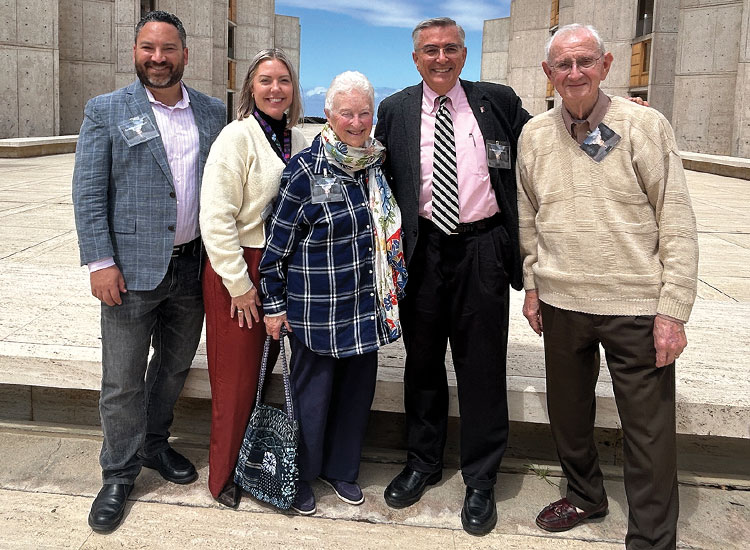
Michelle and her husband, Evan Rutter, bring Claremont McKenna Ambassador-at-Large John Faranda and President Emeritus Jack Stark and wife Jil to Salk.
“The foundational science that we are doing now is going to touch the lives of every single one of us. That is what this world needs.”
–Michelle Chamberlain
Finding the right fit
Chamberlain was surrounded by pre-law students, and, though curious, she was unsure about law by the end of her degree. Instead of rushing into law school, she began teaching fifth and sixth grade.
“In classrooms, you learn about motivating others. You learn about a sense of community and how you develop it. You learn how people learn, how people communicate,” recalls Chamberlain.
But after five years, Chamberlain realized her interest in law school remained. So, she recalibrated, then dove headfirst into law school. Aiming to combine her education experience with law, she accepted a full scholarship at Southwestern Law School to pursue a career in policy. However, plans changed after a summer internship at O’Melveny & Myers LLP, the law firm she joined after passing the California bar exam.
“My family calls me the world’s most unhelpful attorney,” laughs Chamberlain. “I was not a litigator—I was on the structured finance team, and I never set foot in a courtroom. I worked with large global private equity firms, helping them make investments and sell companies.”
But she felt education pulling her back.
“I loved the law. It was challenging and fast-paced. But for me, it felt a little too attenuated from the real challenges of the world,” says Chamberlain. “We had a client at the time, a wonderful man named Robert Day, who happened to graduate from Claremont McKenna College. One thing led to another, and I ended up leaving the law firm to join what is now known as the Robert Day Scholars Program at Claremont McKenna College.”
Over the next 17 years, Chamberlain grew and outgrew multiple roles, eventually landing as the vice president of advancement and student opportunities and dean of the Robert Day Scholars program (it was a very long title that represented years of collecting responsibilities, she says). And all the while, she led the first billion-dollar campaign in liberal arts college history.
After nearly two decades, Chamberlain took stock of her surroundings—the record-breaking campaign had ended, Day had passed away, and the president she’d worked with for more than a decade was set to retire. For Chamberlain, “it seemed like that was the moment to make the move.”
Champion of science
“Cancer has been a huge component, unfortunately, of my family’s history and experience. My grandmother had ovarian cancer. My aunt and my mother have both had breast cancer. I lost a cousin to lung cancer,” says Chamberlain. “When I began thinking of leaving Claremont McKenna, I wanted to go somewhere where I could put down similar roots, where I could invest in the community. I was looking for another 17-year run like I had at Claremont.”
Chamberlain joined the Salk Institute in April 2025, inspired not only by the world-class cancer research and 50-year-old National Cancer Institute-designated Cancer Center, but by Salk’s ethos. “The openness of our research, the nonproprietary nature of our findings—it’s very special and necessary to advance science.”
“The foundational science that we are doing now is going to touch the lives of every single one of us,” says Chamberlain. “And that is what this world needs. I find that the work being done here is truly the work that we need to accelerate.”
With teaching and management skills from the classroom, analytical and communication skills from law, and planning and fundraising skills from higher education, Chamberlain is uniquely positioned to champion Salk science.
New and old friends
When she’s not at work, Chamberlain is busy exploring San Diego and making sense of new people, places, and things. Thankfully, her husband, rescue dog, and parents relocated with her, and most of their extended family is just a short drive away.
Her relationships are the backbone of Chamberlain’s story. Her friends and cousins sharpened her social and emotional skills, her parents motivated her extensive education, Robert Day led her to Claremont McKenna, and her family’s cancer journeys inspired her passion for scientific discovery.
“The most important element of this transition is that I really saw a community that I wanted to be a part of for years, if not decades to come, and that that community is engaged in some of the most remarkable work that the world so desperately needs,” says Chamberlain. “To be able to amplify that message and bring new and old friends into this incredible community is such an honor.”
Featured Stories
 What’s next for GLPs? Salk scientists are shaping the future of weight-loss medicineSalk researchers are breaking metabolism down piece by piece. Their recent discoveries could help reduce the side effects of GLP-1 drugs and inspire the next generation of weight management therapies.
What’s next for GLPs? Salk scientists are shaping the future of weight-loss medicineSalk researchers are breaking metabolism down piece by piece. Their recent discoveries could help reduce the side effects of GLP-1 drugs and inspire the next generation of weight management therapies.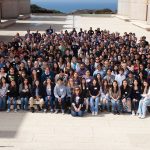 Science comes alive for high schoolers and educators at SalkSalk’s annual High School Science Day had the highest participation in the event’s history, as 205 excited students were welcomed onto campus. Teachers also had a day of their own at the Ellen Potter Teacher Symposium, learning side-by-side with world-renowned scientists.
Science comes alive for high schoolers and educators at SalkSalk’s annual High School Science Day had the highest participation in the event’s history, as 205 excited students were welcomed onto campus. Teachers also had a day of their own at the Ellen Potter Teacher Symposium, learning side-by-side with world-renowned scientists.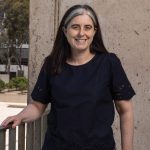 Nicola Allen: Neuroscience has a new starAs her recent promotion and awards reflect, Allen has led a paradigm shift in neuroscience by turning the field's spotlight onto astrocytes. These specialized brain cells could be the missing piece to understanding Alzheimer's and other neurological diseases.
Nicola Allen: Neuroscience has a new starAs her recent promotion and awards reflect, Allen has led a paradigm shift in neuroscience by turning the field's spotlight onto astrocytes. These specialized brain cells could be the missing piece to understanding Alzheimer's and other neurological diseases.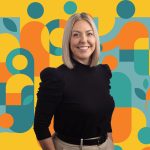 Michelle Chamberlain: Bringing together communities old and newChamberlain, whose lifelong commitment to others has shaped her journey to Salk, now serves as Salk’s vice president of External Relations, leading fundraising, communications, community engagement, foundation relations, and stewardship efforts.
Michelle Chamberlain: Bringing together communities old and newChamberlain, whose lifelong commitment to others has shaped her journey to Salk, now serves as Salk’s vice president of External Relations, leading fundraising, communications, community engagement, foundation relations, and stewardship efforts.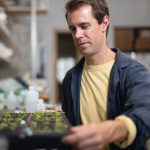 Joseph Swift: Saving potatoes, one road trip at a timeSwift, a plant biologist and startup co-founder, had an adventurous upbringing in Australia filled with natural beauty. Today, he uses plant genomics to tackle urgent questions in sustainability and agriculture.
Joseph Swift: Saving potatoes, one road trip at a timeSwift, a plant biologist and startup co-founder, had an adventurous upbringing in Australia filled with natural beauty. Today, he uses plant genomics to tackle urgent questions in sustainability and agriculture.

